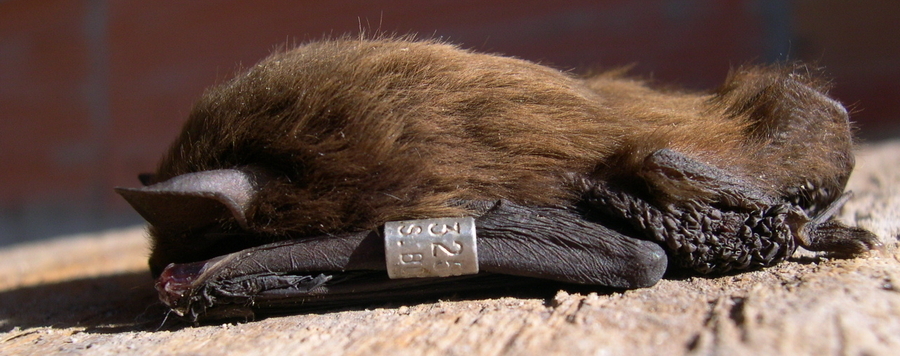
Research on life history
The banding and any re-discovery of a ringed bats provide insights into the life history of the animal. Bat-females, as here, for example, brown long-eared bat (Plecotus auritus), live together in so-called nursery companies in the summer to raise their young. If many animals in a nursery are ringed, you can acquire knowledge about their age structure and survival rate in subsequent years through the controls of the ringed animals. The maximum determined age using the rings for a European bat is 33 years.
As quarters bats prefer small gaps and cavities in buildings or trees, but also move into the whole roof when it is available. Bats rely on existing quarters, because they are not able to build a nest or to dig a hole. From banding and rediscoveries, we know that bats are very tradition-conscious animals. Every summer, the traditional quarters of the females and their daughters and granddaughters get visited again to rear the next generation. Meanwhile the bats sometimes reside in remote areas, where their mating and overwintering sites are. Each bat-quarter is protected by the Federal Nature Conservation Act.





